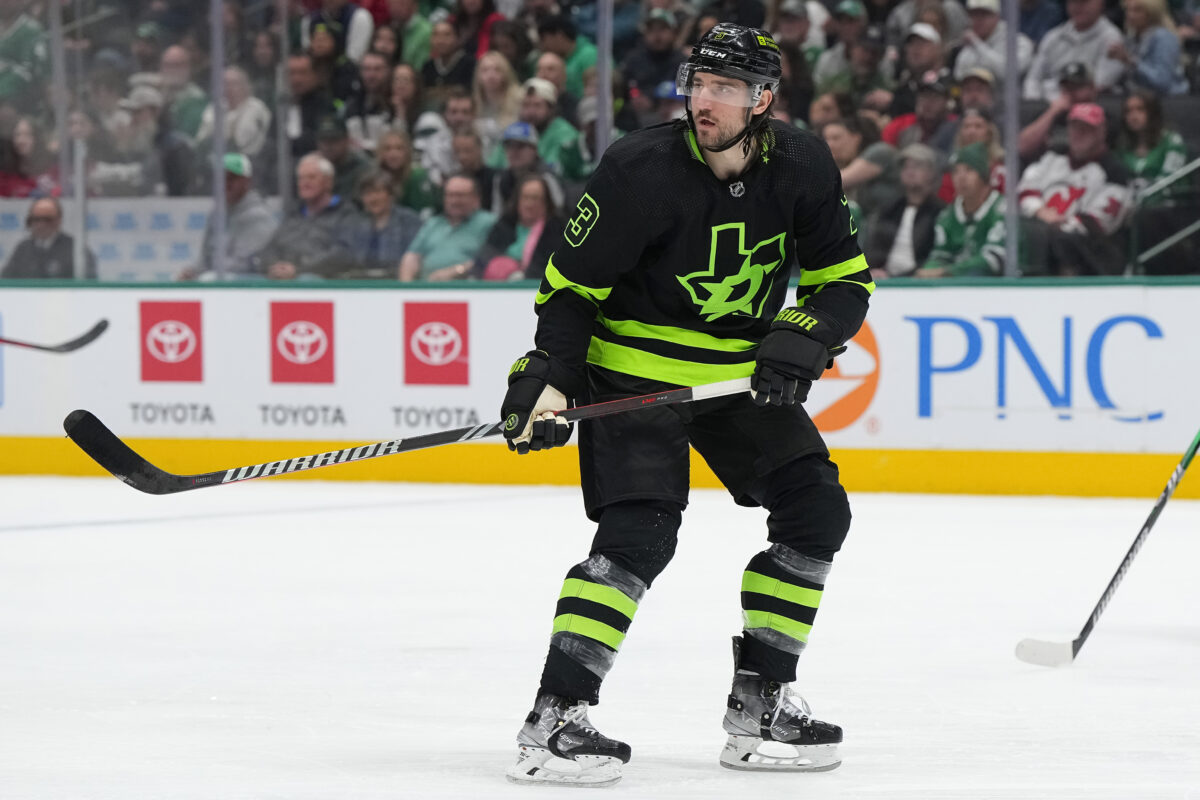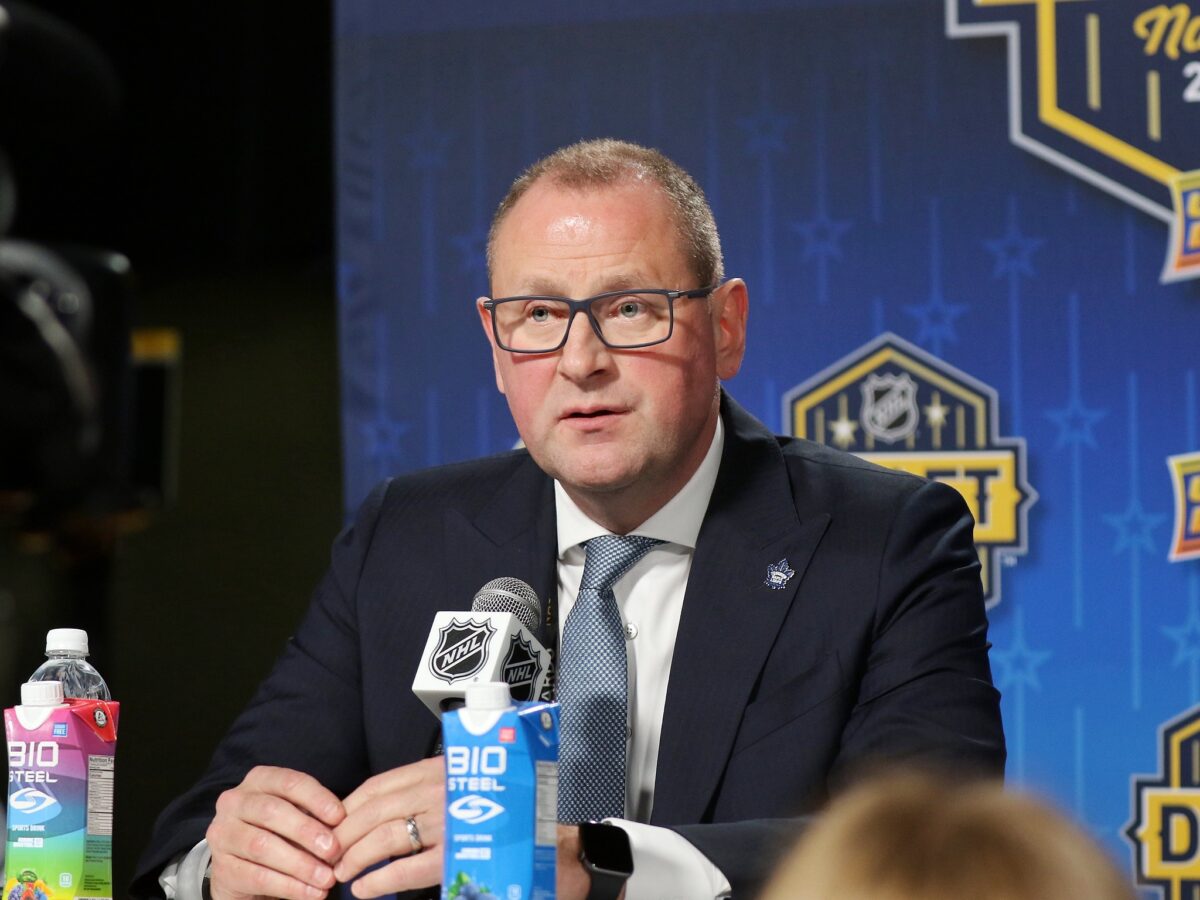When Zach Hyman left the Toronto Maple Leafs to sign a seven-year contract with the Edmonton Oilers in 2021, it was met with skepticism primarily due to the term and Hyman’s age. At 29, a long-term contract was seen as risky since players often decline in performance as they age. The concern was that Hyman might not sustain a high level of play throughout the entire duration of the contract, which would make it difficult for the Oilers to manage their salary cap effectively.
Maple Leafs general manager (GM) Kyle Dubas seemed to see the writing on the wall and barely made an offer to Hyman. At the time, most hockey pundits would have sided with Dubas on that decision. There were issues for the Maple Leafs organization at the time that militated against signing the hard-working but thought to be over-priced, Hyman.
Hyman’s Contract Was Deemed Too Rich and Far Too Risky
Another major point of concern was Hyman’s injury history. He had previously suffered a significant knee injury that required surgery, and his physical style of play made him more susceptible to future injuries. This raised doubts about his durability over the length of the contract, with critics fearing that he might miss significant time due to injuries, further diminishing the value of the deal.
Related: Maple Leafs’ Top 10 Prospects for 2024-25 Season
Additionally, there were questions about whether Hyman’s production would justify his average annual value (AAV) of $5.5 million. While he was productive with the Maple Leafs, some analysts doubted if he would maintain or exceed that production in Edmonton. Critics argued that the Oilers might have overpaid for Hyman based on his market value and could have allocated those resources more effectively to address other needs within the team.

As it turned out, Hyman hit the ice running. Over his three seasons with the Oilers, he’s jumped from 27 goals (2021-22), then to 36 goals (2022-23), to 54 goals (in 2023-24). Few saw it coming. And, what seemed like a poor contract turned into a bargain for the Oilers. Hyman also played like a demon during the postseason, earning the right to any accolades that came his way.
In retrospect, the Maple Leafs were left empty-handed.
New GM Treliving Did What Dubas Would Not Do
Two weeks ago, Maple Leafs general manager Brad Treliving made the bold move that his predecessor, Dubas, would not have made. He pushed the envelope by signing defenceman Chris Tanev to a six-year contract, which will see him play until he’s 40 years old. This decision contrasts sharply with Dubas’ approach when faced with a similar decision regarding Hyman.
Related: Maple Leafs News & Rumors: Marner, Giordano & Tanev
Treliving’s aggressive strategy became evident early when he secured Tanev’s negotiating rights from the Dallas Stars before July 1. The Maple Leafs then signed Tanev to a six-year, $27 million contract, keeping him in Toronto through his age-40 season. Nobody doubts that Tanev, a seasoned defenceman with 792 regular-season games under his belt and 190 points (33 goals, 157 assists), doesn’t address a critical need for defensive stability on the Maple Leafs’ blue line.
However, in ways similar to Hyman’s signing by the Oilers, each player’s playstyle factors into the decision to sign them. Hyman plays a physical game, and it was thought that well before the contract had run its course, he would have slowed appreciably. His age (34) and the contract’s length similarly raised eyebrows. NHL insider Chris Johnston called the contract “long and risky” but acknowledged that Tanev was precisely the type of player the Maple Leafs needed.

The mixed sentiments surrounding the signing highlight that while Tanev is an ideal addition to address the team’s defensive issues, committing to a six-year deal for a 34-year-old is considered an iffy contract. The contract addresses immediate needs but poses significant long-term risks. Still, Treliving didn’t blink. As a result, Tanev is a Maple Leafs blueliner for the long haul.
Dubas’ Caution Led to Hyman’s Departure
In contrast, unless there’s something under the surface we don’t know about, when Dubas faced a similar decision with Hyman a few years ago he opted for caution. Instead of committing to a long-term deal, he allowed Hyman to enter free agency, where he was promptly signed by the Oilers. Hyman transformed into a productive scorer. As noted, he even reached the 50-goal mark last season. He’s consistently contributing offence – at least thus far – with no sign of slowing down. So far for the Oilers, so good.
Related: Who’s the Maple Leafs’ Better Fit: Ekman-Larsson vs. Giordano
Dubas’ reluctance to commit to Hyman long-term was rooted in concerns about the player’s aging curve and potential decline. However, his success in Edmonton shines a light on the potential upside Treliving is betting on with Tanev. Treliving appears willing to accept the risks associated with an aging player like Tanev as a way to address immediate team needs.
Strategic Differences and Future Implications
Treliving’s decision to sign Tanev is a focus on immediate gains, with the willingness to sacrifice future flexibility – if need be. This approach contrasts with Dubas’ more conservative strategy, which prioritized long-term cap management and player sustainability. The irony is that Dubas is seldom thought to be a conservative GM. Quite the opposite.
Looking at Tanev’s signing, it’s clear that Treliving is focused on the present. He’s willing to accept the possibility that Tanev will not be as effective in the final years of his contract as he will be this season. This gamble underscores a philosophical shift in the Maple Leafs’ management, with Treliving willing to take on higher risks to solve current problems.

As the Maple Leafs move forward, hockey fans and analysts will closely watch how Tanev’s contract plays out compared to Hyman’s success in Edmonton. The contrasting strategies of Treliving and Dubas provide a fascinating case study in NHL roster management and the balancing act between immediate needs and future sustainability.
For good or for ill, Treliving sees the world differently than Dubas did. The team might not be more successful, but it sure looks different – except, it seems, for the Core Four who are still around.
